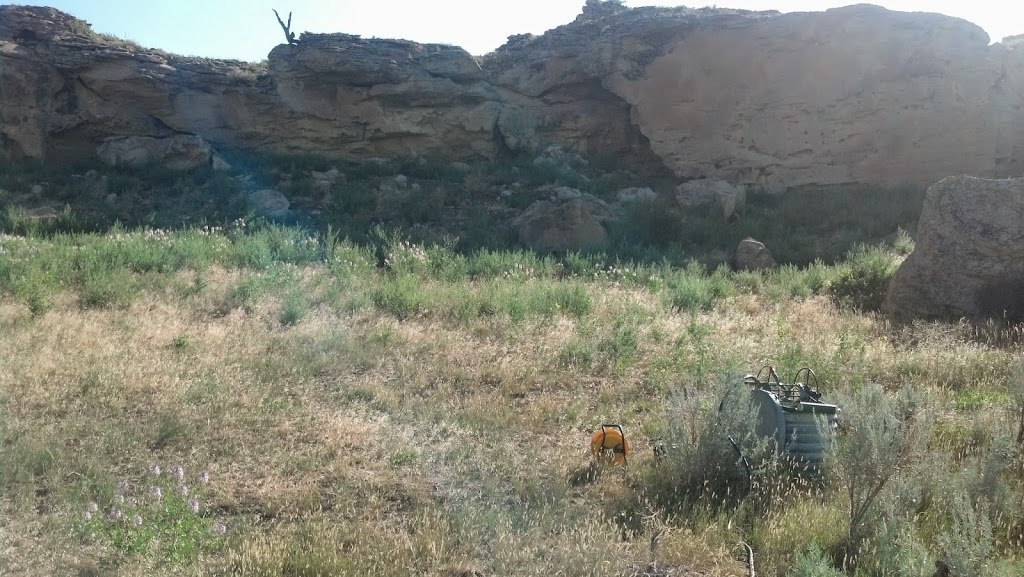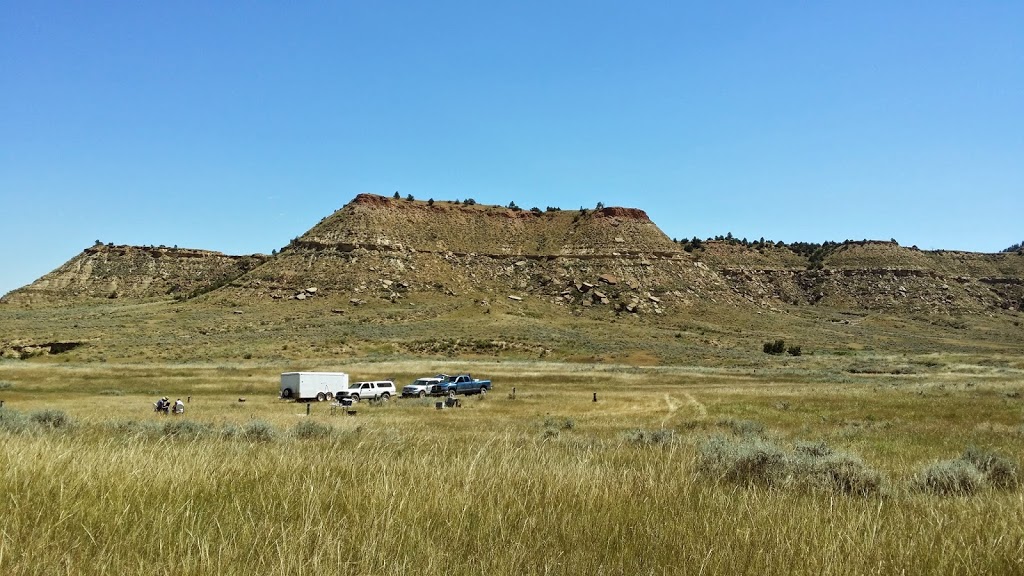When most people think of methane production and aqueous geochemistry, they probably think of shale gas. However, about 8% of the natural gas produced United States in a year comes from coalbeds. In the Powder River Basin, the majority of the natural gas is produced by groups of microorganisms that break down the coal and convert the organic carbon to methane and carbon dioxide. Several other coal basins throughout the world also have significant accumulations of biogenic natural gas. Research into this natural gas resource is driven by the potential to stimulate the microorganisms to produce more methane from the coal or to produce the methane more quickly.
 |
|
The Powder River Basin, viewed from the Bighorn Mountains in Wyoming
|
My research in the Powder River Basin is primarily focused on relating in situ aqueous and isotope geochemistry to microbiology to better understand how microorganisms and water chemistry are related. I collect samples from shallow monitoring and coalbed methane production wells (typically 300-1000 feet deep), which are then analyzed for major ions, isotopes of carbon, sulfur, and water, and gas composition and isotopes. We are working with microbiologists at Montana State to help analyze microbial communities in wells where water samples are collected. The hope is that understanding the in situ geochemistry conditions will give some insight into how changing these conditions in an attempt to stimulate methane generation might affect these communities.
 |
| Using a submersible pump to pump water from a monitoring well in Montana to collect groundwater samples. |
 |
| Pumping from another monitoring well site in Montana. |
In addition to the work described above, we have also collected samples to analyze for noble gas composition. These samples are being used to try and determine the residence time of water in from sampled wells. Residence time is calculated using concentration of 4He, which accumulates in water as a product of radioactive decay of uranium and thorium in the subsurface. It is hoped that understanding residence time can give us an idea of how long it has taken to accumulate the amount of methane present in the Powder River Basin.
 |
|
Collecting noble gas samples from a coalbed methane production well operated by Summit Gas Resources.
|
 |
|
Glacial lake in the Cloud Peak Wilderness, which is in the Bighorn Mountains adjacent to the Powder River Basin. From a hike taken during an off day from sampling.
|
![]() This work is licensed under a Creative Commons Attribution-NonCommercial-ShareAlike 4.0 International License.
This work is licensed under a Creative Commons Attribution-NonCommercial-ShareAlike 4.0 International License.

